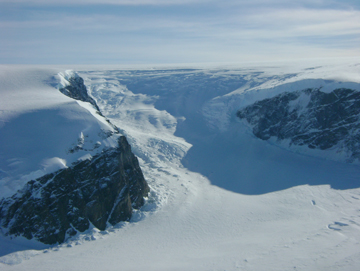From: Michael Studinger, Lamont-Doherty Earth Observatory, co-principal investigator on gravimeter team
PUNTA ARENAS, Chile – The weather forecast for our survey area yesterday, Nov. 16, over the Larsen C Ice Shelf predicted excellent conditions. Given the difficult weather situation over the past couple of days, this was a welcome change. After carefully studying satellite images and computer models and talking to the meteorologist at the Punta Arenas airport, we decided to fly NASA’s DC-8 over Antarctica again.
The flight took us through an almost complete tour of the Antarctic cryosphere. We followed the flow of ice from the interior all the way to the ocean where it ends up as icebergs and eventually melts. We began our tour by flying over small ice caps on the Antarctic Peninsula. The snow and ice that forms these ice caps eventually flows downhill through steep valleys that are occupied by glaciers or ice streams.
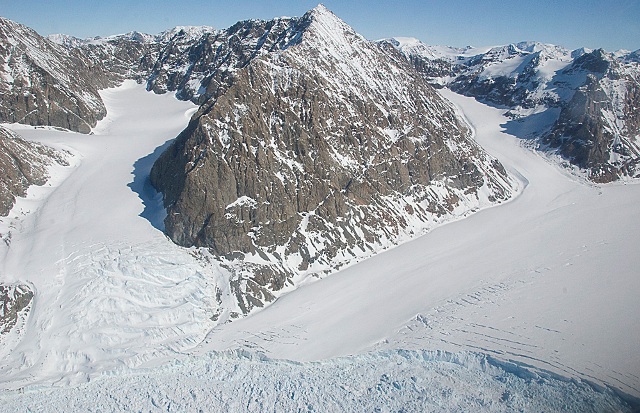
Glaciers flowing down steep valleys transport ice from the interior of Antarctica to the Larsen Ice Shelf near the coast.
At one point during the flight I took the seat in the cockpit behind our two pilots to get a better view of the spectacular scenery. We descended into a steep valley that was filled with ice flowing into the remnants of the former Larsen B Ice Shelf that broke apart a few years ago. The ice that’s flowing down through the valleys is pushing the ice in the ice shelves away and eventually huge chunks of ice break off and form icebergs. On the ice shelf the ice goes afloat and forms huge flat surfaces that seem to be endless. Beneath the ice is ocean water. We are here to study how the warm ocean water melts the ice shelf from beneath.
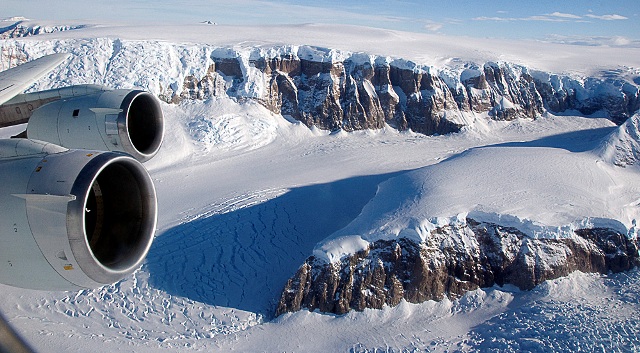
Small caps of stagnant ice cover the summits while the ice in the valley is moving relatively fast towards the coast.
Our next survey line takes us all the way to the edge of the ice shelf where we can see several of these gigantic icebergs floating in the far distance surrounded by sea ice and pockets of open water. After crisscrossing the part of the Larsen C Ice Shelf that is still intact, we head back up to the crest of the Antarctic Peninsula and repeat our mini-tour through the Antarctic cryosphere on a different survey line.
Every time I look out of the window and soak in the spectacular scenery I see an incredibly beautiful but fragile landscape.
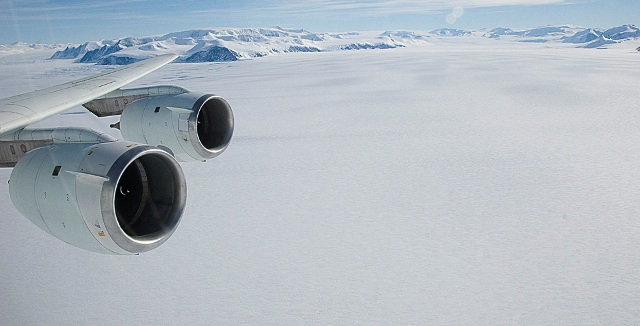
We fly over the flat and mostly featureless Larsen Ice Shelf. You can see the steep mountains and glaciers in the background.
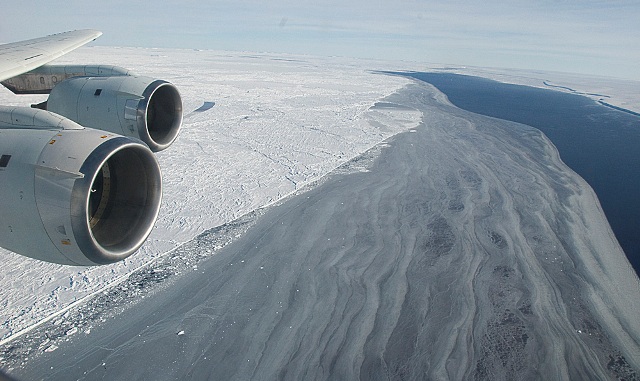
We complete our tour of the Antarctic cryosphere at the edge of the Larsen C Ice Shelf where we reach open water and sea ice.
All photos: Michael Studinger

